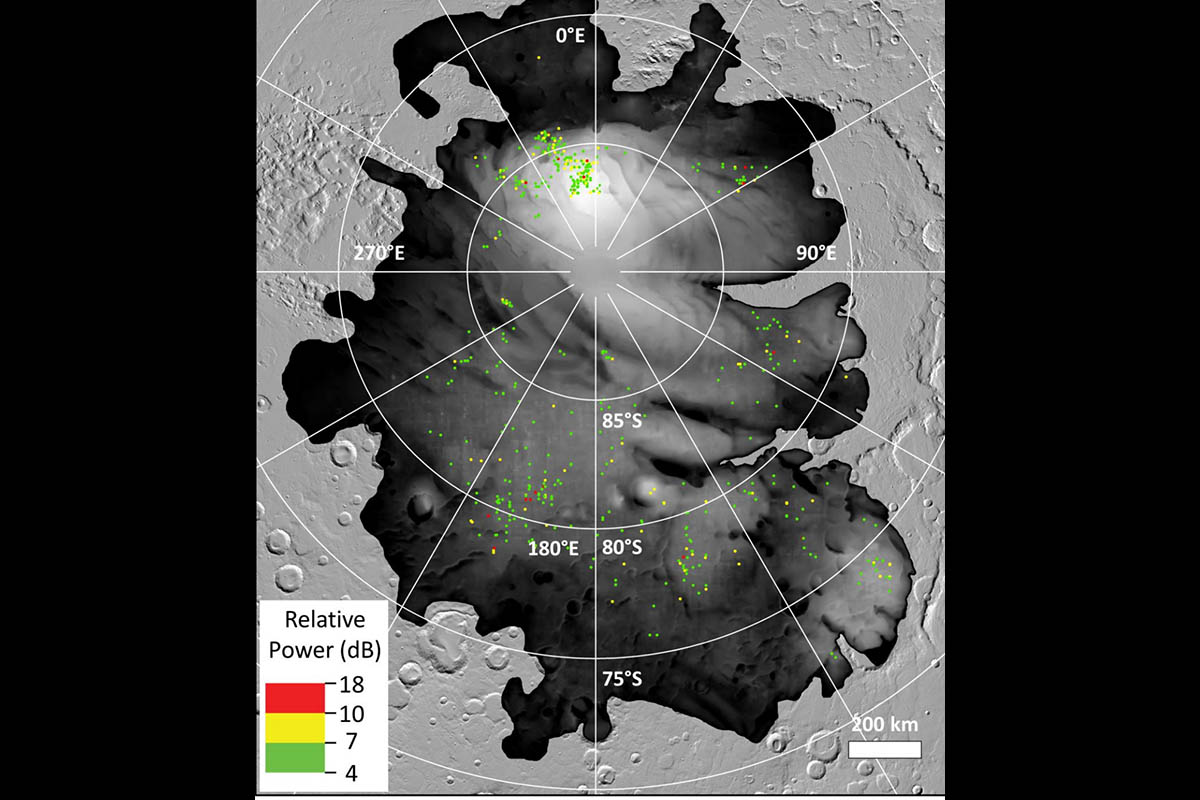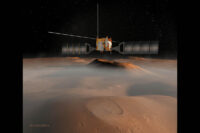The colored dots represent sites where bright radar reflections have been spotted by ESA’s Mars Express orbiter at Mars’ south polar cap. Such reflections were previously interpreted as subsurface liquid water. Their prevalence and proximity to the frigid surface suggests they may be something else. (ESA/NASA/JPL-Caltech)
Home The colored dots represent sites where bright radar reflections have been spotted by ESA’s Mars Express orbiter at Mars’ south polar cap. Such reflections were previously interpreted as subsurface liquid water. Their prevalence and proximity to the frigid surface suggests they may be something else. (ESA/NASA/JPL-Caltech) The colored dots represent sites where bright radar reflections have been spotted by ESA’s Mars Express orbiter at Mars’ south polar cap. Such reflections were previously interpreted as subsurface liquid water. Their prevalence and proximity to the frigid surface suggests they may be something else. (ESA/NASA/JPL-Caltech)
The colored dots represent sites where bright radar reflections have been spotted by ESA’s Mars Express orbiter at Mars’ south polar cap. Such reflections were previously interpreted as subsurface liquid water. Their prevalence and proximity to the frigid surface suggests they may be something else. (ESA/NASA/JPL-Caltech)



